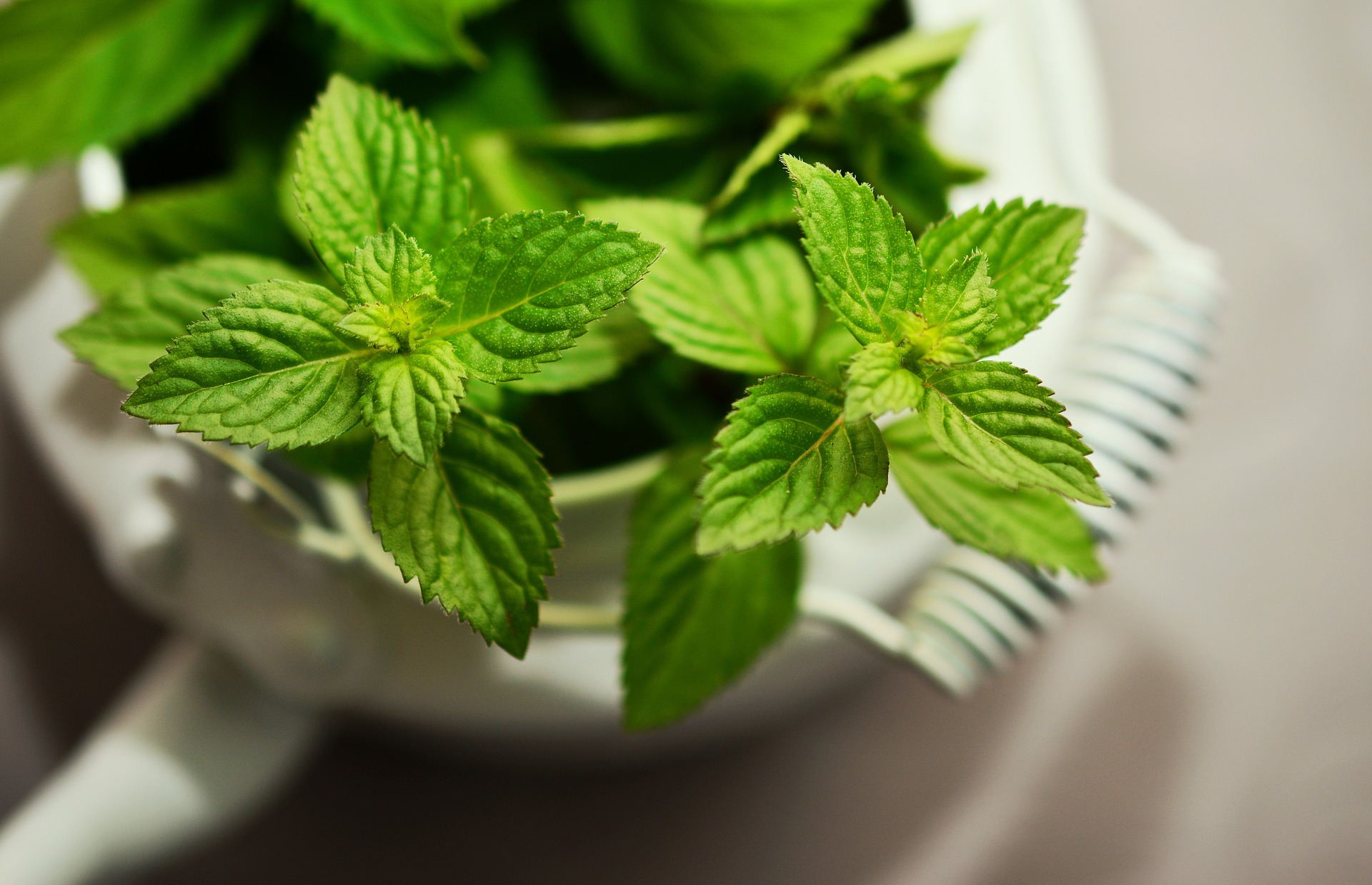Mint! It’s minty.
Let’s check out what else it is.
Mint has several subcategories – spearmint, peppermint – spearmint is the most popular for herbal purposes.
Origin:
Mint was used extensively by the Greeks and Romans. In Roman mythology, the word “mint” derived from Minthe, a nymph who charmed Pluto. Pluto’s jealous wife, Proserpina, transformed Minthe into a lowly plant.
Growing mint:
- Is difficult to grow from seed; use a cutting.
- Is fast-growing and will spread out (needs room).
- Is planted in the spring.
- Prefers deep, moist soil.
Even if you don’t have a green thumb, you’ve probably heard about how mint can take over the garden. Thus, it’s pretty easy to grow. The downside here is that it can choke out other plants.
Drying mint:
Like other herbs, mint can be hung in bunches and dried out in a warm, dark environment – like a basement – until 90% of the moisture has been depleted.
Freezing mint:
Mint can be frozen via the ice cube method. Or, you can freeze for two to three hours on a baking sheet, then transfer to Ziploc bags.
Food mint compliments:
Unlike other herbs that pair well with one another, mint tends to be work best by itself, or with other herbs only in small amounts.
It also goes with. . .
- Lamb, pork, chicken, veal
- Salads and salad dressings
- New potatoes
- Green beans
- Tomatoes and eggplant (in small amounts)
